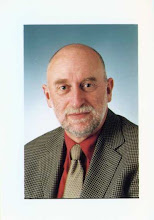Events after the accident
The wage packets of the dead miners were docked quarter of a shift's pay for failure to complete the shift.
An inquiry opened on October 25, 1934 and highlighted management failures, a lack of safety measures, bad working practices and poor ventilation in the pit. The miners were represented at the Inquiry by Sir Stafford Cripps; the mine owners, mindful of the fact they could face criminal charges, hired a formidable team of barristers including Hartley Shawcross.[4] Recovery teams entered the sealed pit in 1935 in connection with the Inquiry; however the Company allowed only its own officials to enter the Dennis districts, citing dangerous conditions, and the victims' bodies remained sealed in the pit. It was widely perceived that these actions were a deliberate attempt by the mine's owners to cover up any remaining evidence of their culpability, as it meant that any theories as to the explosion's cause could not be conclusively proven.[4] The colliery reopened six months after the disaster with coal production resuming from the South-East section in January 1936.The inquiry, chaired by Sir Henry Walker, issued its findings early in 1937. The two Assessors chosen by the miners and by the pit's management, and the barristers representing them, gave widely different suggestions as to the explosion's cause. In the absence of any proof, due to the Dennis section remaining sealed, Walker drew very cautious conclusions
Later in 1937 court proceedings were started in Wrexham against the Pit Manager, the Under-Manager and the United & Westminster Collieries Limited, the owners of the mine. Aside from the evidence of poor working practices, it was discovered that Bonsall had after the accident instructed an assistant surveyor, William Cuffin, to falsify records of dust samples when none had actually been taken.[2] The court however dismissed most of the charges, finding the mine's management guilty only of inadequate record-keeping, and Bonsall was fined £150 plus costs; the mine's owners were never called to give evidence. Bonsall, despite being calculatedly portrayed as a ruthless and cynical manager by Cripps and others, is likely to have been more of a "weak man driven beyond his capabilities"[10] and who was reduced to a state of extreme exhaustion and stress by over 20 hours of examination at the inquiry. The Under-Manager, Williams, was singled out for praise in that unlike other officials he was found to have made a genuine attempt to improve working conditions for the miners since taking the job.
Cripps used the evidence given at the inquiry to call for nationalisation of the coal industry. This eventually occurred in 1947, when the pit, along with others in the country, was taken over the by the National Coal Board. As part of the takeover agreement, nearly all the operating records and correspondence relating to Gresford Colliery were deliberately destroyed.




No comments:
Post a Comment